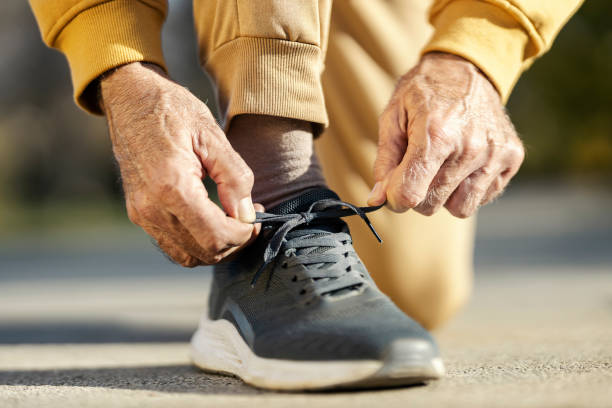Hydration is essential after a tough workout session to replace lost fluids. Sweating causes significant water loss, and restoring this balance aids the recovery process.
Drinking water helps regulate body temperature and maintain joint lubrication. Dehydration can impair performance and prolong recovery times. Ensure you rehydrate adequately after each session.
Adding electrolytes to your water can improve absorption and replace minerals lost through sweat. Sports drinks or coconut water are good options after especially intense workouts.
Avoid caffeine and alcohol post-workout as they further dehydrate the body. Focus on clear, mineral-rich liquids to replenish fluids and maintain optimal performance.
2. Prioritize Quality Sleep
Sleep plays a critical role in muscle recovery and overall well-being. During sleep, the body undergoes repair processes that strengthen and rebuild muscle tissue.
Aim for at least 7 to 9 hours of uninterrupted sleep each night. Quality sleep promotes the release of growth hormones essential for muscle repair and recovery.
Create a relaxing bedtime routine to improve sleep quality. Avoid screens before bed and maintain a consistent sleep schedule to support your body’s natural rhythms.
Inadequate sleep can lead to fatigue, increased soreness, and hinder performance. Prioritizing rest is as crucial as your workouts for consistent progress and recovery.
3. Eat Nutrient-Dense Meals
Fueling your body with the right nutrients post-workout accelerates recovery. Consume a balanced meal rich in proteins, carbohydrates, and healthy fats within two hours of exercise.
Protein supports muscle repair and growth, while carbohydrates replenish glycogen stores. Include lean meats, whole grains, and vegetables for a complete post-workout meal.
Avoid heavily processed foods as they lack essential nutrients needed for recovery. Focus on real, whole foods to provide your body with the best building blocks.
Don’t skip meals after a workout. Consistent nourishment supports energy restoration, muscle rebuilding, and overall physical recovery from intense sessions.
4. Cool Down and Stretch
A proper cool-down routine helps the body transition from exertion to rest. Light cardio and stretching prevent blood from pooling and reduce dizziness or fatigue post-workout.
Stretching increases flexibility and helps decrease muscle stiffness and soreness. Target the muscles worked during your session with static or dynamic stretches.
Spending 10 to 15 minutes cooling down improves circulation and prepares the body for faster healing. It also helps in clearing out metabolic waste like lactic acid.
Regular stretching routines support long-term mobility and reduce injury risk. Incorporate this essential practice after every intense workout for lasting benefits.
5. Use Foam Rolling or Massage
Self-myofascial release using foam rollers alleviates muscle tightness and soreness. It increases blood flow, improves range of motion, and aids in faster muscle recovery.
Foam rolling works by breaking up knots or adhesions in the fascia surrounding muscles. Apply moderate pressure to affected areas for best results.
Massage therapy also supports recovery by relaxing muscles and improving circulation. Regular sessions with a professional can reduce inflammation and tension in key areas.
Consider combining both techniques in your routine. They not only relieve soreness but also support performance and flexibility over time.
6. Take Active Recovery Days
Active recovery involves low-intensity activities like walking, swimming, or yoga. These movements help increase blood flow without adding further stress to your muscles.
It aids in flushing out toxins and reducing muscle stiffness. Active recovery prevents complete inactivity, which can lead to sluggishness or tight muscles.
Schedule one to two active recovery days each week to support continuous progress. Avoid intense workouts on these days to allow your body to heal.
This method boosts energy levels, enhances mobility, and helps in maintaining consistency with your overall fitness goals.
7. Manage Post-Workout Inflammation
Intense workouts often lead to inflammation, which can cause soreness and stiffness. Managing inflammation helps speed up recovery and reduce discomfort.
Cold therapy like ice baths or cold compresses can reduce swelling and muscle damage. Use these methods immediately after training for the best effects.
Anti-inflammatory foods such as turmeric, ginger, and berries can also aid recovery. Incorporate these into your meals to naturally manage inflammation.
Avoid overusing painkillers unless prescribed. Natural methods are often sufficient and help your body adapt more efficiently to physical stress.
8. Stay Consistent With Recovery
Recovery isn’t a one-time event—it requires consistency. Sticking to a post-workout routine ensures your body gets the support it needs after each session.
Create habits like stretching, hydrating, and proper eating every time you work out. Over time, these practices become second nature and enhance long-term performance.
Inconsistent recovery can lead to burnout, injuries, or lack of progress. Prioritize rest days and maintain good habits even when you’re feeling strong.
By making recovery a part of your routine, you’ll maintain better energy levels, performance, and overall health in the long run.
9. Incorporate Mobility Work
Mobility training improves joint function and muscular coordination. It helps reduce injury risk and supports better movement patterns during workouts and recovery.
Incorporate mobility drills like hip openers, shoulder rolls, and ankle stretches. Focus on areas that feel tight or restricted during workouts or daily movements.
Performing mobility work on rest days helps your body stay limber and reduce soreness. It complements both strength and cardio training by improving range of motion.
Over time, improved mobility leads to more efficient movement and quicker recovery from physical exertion. Don’t overlook this essential aspect of fitness.
10. Monitor Your Progress
Tracking your recovery helps identify what works best for your body. Note down how you feel post-workout, including soreness, energy levels, and sleep quality.
Use fitness apps or a journal to monitor trends. This data helps optimize your workout schedule and recovery routine for better results over time.
If you’re constantly fatigued or sore, it may be a sign to adjust intensity or increase recovery efforts. Listen to your body’s signals and adapt accordingly.
Monitoring allows you to stay informed, prevent overtraining, and make educated decisions about future workouts and recovery methods.
11. Consider Supplements Wisely
Supplements can support recovery but aren’t a substitute for good nutrition. Consider options like protein powders, BCAAs, or omega-3s to support muscle repair and inflammation control.
Always consult a healthcare provider before adding supplements to your routine. Quality and dosage matter, and not all products are beneficial or necessary.
Post-workout protein shakes are convenient and effective when whole food meals aren’t accessible. Choose clean products with minimal additives for best results.
Supplements should fill gaps in your diet, not replace meals. When used correctly, they can be a valuable part of your recovery toolkit.
12. Practice Mental Recovery
Physical recovery isn’t complete without mental rest. Intense training takes a toll on your mind, and relaxing your thoughts is just as important as healing muscles.
Engage in mindfulness practices such as meditation, breathing exercises, or journaling. These techniques reduce stress, improve focus, and aid emotional recovery.
Mental fatigue can impact performance and motivation. Taking time for yourself enhances overall well-being and prevents burnout in high-intensity training programs.
Balance your mental health alongside physical goals. A calm and focused mind leads to better workouts, clearer goals, and sustained long-term success.











